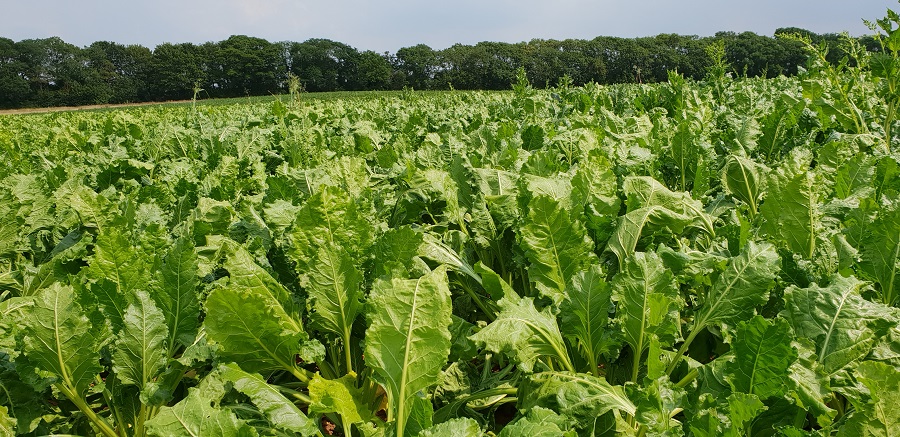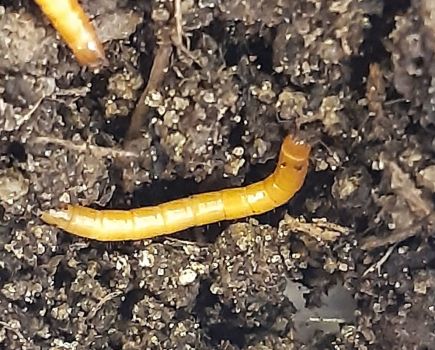The sugar beet industry is looking to plant breeders to find genetic solutions to emerging threats to productivity. CPM gets a breeder’s perspective and finds out how a grower has been getting on with ALS-herbicide tolerant beet.
There’s a clamour for a genetic solution to virus yellows.
By Rob Jones and Lucy de la Pasture
Sugar beet has been one of plant breeders’ biggest success stories. Recent times have seen Britain’s sugar beet crop constantly deliver improved yields as new varieties come along, while other mainstream arable crops have at best been stuck in a yield plateau.
That improvement is set to continue as a result of advances on several fronts, including an improved understanding of genetics, big data and seed technology, believes SESVanderhave’s managing director, Ian Munnery.
Britain’s maritime climate is well-suited to the basic needs of the sugar beet crop and increasingly the cropped area has become concentrated in the hands of professional growers, experienced in producing the crop efficiently. But getting the most from a good climate and proficient growers requires suitable varieties, says Ian.
The company’s UK team are focused on extensive testing of varieties over a series of years, he explains, to ensure those offered for the British Beet Research Organisation’s Recommended List are fit for purpose in this country.
“Experience drawn from sugar beet trials and production across the globe – from Russia to Chile, from the USA to India – provides a great foundation on which to select varieties for Great Britain,” says Ian. “But to build on this, we need in-country experience of the range of soils and local climates where Britain’s crops are grown today.”
Behind the field trials lays an increasingly sophisticated range of disciplines in plant genetics. Worldwide, SESVanderhave ploughs some 15% of its annual turnover back into sugar beet research. The wealth of data and in-depth knowledge of the plant’s physiology, biochemistry and genetics both inform and guide breeding programmes to address a range of challenges, not just yield, he points out.
“Rhizomania resistance is a long-established trait that is now the norm for UK seed. More recently, we’ve seen beet cyst nematode tolerance bred into varieties like Lacewing and much of the yield drag that was associated with early varieties with the trait, has now been removed. That means a grower who’s unsure whether the pest is present can choose a tolerant variety without suffering a significant yield penalty,” he says.
“Recent years have seen advances in reducing the threat from bolters – which posed a serious risk to yield for growers, either looking to optimise their production by sowing early to take advantage of a longer growing season or to exploit early plant maturity in the fight against aphids and virus yellows.
“From a wider point of view, there’s also the problem of weed beet that bolters introduce into the rotation. Resistance to rust and the changing cocktail of autumn leaf diseases have also come to the fore in recent years,” he adds.
Wren is the latest SESVanderhave variety to be added to the BBRO RL and is the result of over 10 years of research to identify new varieties offering robust performance, in terms of establishment, root yield and low bolting – whatever the season offers.
Looking into the future, Ian is confident growers will see new traits emerging as researchers delve deeper into the sugar beet genome.
“After last season, there’s a clamour for a genetic solution to virus yellows, which is a breeding target but is some way off – particularly given the multi-dimensional nature of the breeding challenge,” he says.
“With climate change, drought tolerance is an increasingly important trait. Similarly, the drive to reduce carbon emissions will make nitrogen use efficiency important – the target genes for these are well documented and within our development pipeline.”
A recent addition to the plant breeder’s toolkit is drone imaging. In Belgium, a project called ‘BeetPhen’ has evaluated digital field phenotyping (appearance) methods in a collaboration between SESVanderHave, Vito Remote Sensing and CR-AW (Walloon Agricultural Research Centre) and is funded by BELSPO (Belgian Science Policy Office).
The initial aim is to provide plant breeders with a fast, efficient way to detect and measure disease infections, with support from artificial intelligence and machine learning to link the physical observations with the genetic fingerprint of a variety.
Not only is the genetics in the seed constantly evolving, but so is seed treatment technology, highlights Ian. “Treating the seed and enveloping it in a carefully devised pellet will particularly affect the plant’s early life. Rapid emergence and even establishment ensure more leaf is available to capture the sun’s energy for longer, so enhancing yield, reducing weed competition and helping the plant hit maturity and thus resist aphid feeding naturally.
“It’s a challenging, but exciting time for the crop,” he says. “Advances in achieving breeding goals could be accelerated by novel breeding techniques, which both the UK Government and the EU appear to be recognising could deliver a step change in developing solutions to both current and emerging breeding targets.
“It won’t bring instant results. For every variety, sound testing under local conditions is required, and that’s something which varies each year in our climate.
Conviso passes the fat hen test
Asked by KWS in the spring of 2020 to sow 10ha of ALS-herbicide resistant beet at Symonds Farm as a demonstration crop for growers in the Bury factory area, Steve Brummitt, manager at George E Gittus and Sons near Bury St Edmunds, had no hesitation in accepting the request. The opportunity to test the performance of the Conviso One (foramsulfuron+ thiencarbazone-methyl) herbicide on a heavily weed-infested field was simply too good to overlook.
The fact that it was the last year for using herbicides containing desmedipham served to increase the value of such an opportunity, he says. “The 2020 season was an ideal opportunity to test Conviso One because we still had Betanal maxxPro (desmedipham+ phenmedipham+ ethofumesate+ lenacil) as the benchmark for control.
“It was the performance of Conviso One in tackling broadleaf weeds that most interested me. Any weed beet control would be a bonus for us, as fortunately our issues are restricted to only a few fields.”
He was also attracted by the possible time savings from fewer herbicide applications under the system. “March and April are the busiest months of the year, so the potential time saving from fewer spray passes is something we would value highly, but only if the weed control that can be achieved is good enough,” says Steve.
To give it a proper test, he deliberately chose a field with a high weed burden. The crop established well but the dry spring that followed ensured tough conditions and made for a protracted period of weed emergence, providing a decent test of Conviso One’s residual persistence.
The crop was sown in mid-March, as advised by KWS, and divided into four treatment zones based on 36-metre tramlines. The treatments were Conviso One; Conviso One followed by Betanal maxxPro plus Goltix (metamitron); Conviso One plus oil; and Betanal maxxPro plus a pre and post-emergence Goltix (farm standard).
“The standard programme had to be adapted to include a second application of Betannal maxxPro. This was partly due to the anticipated weed pressure on this part of the field, which was sown to game cover the previous season, but also the dry spring continued far longer than we could have foreseen, resulting in an extended period of weed control. As a result, the Conviso One tramline also received an application of Betannal maxxPro.”
To some this may mean the Conviso One herbicide wasn’t given a true test and while Steve concedes there’s perhaps some truth in this, he believes the weed population that emerged suggests Conviso One offers a level of performance that extends beyond classical chemistry.
“Last year’s field had a significant burden of fat hen, black bindweed, white campion and groundsel – with all treatments timed around fat hen. The control of fat hen varied across the treatments but was best where Conviso One had been applied. All other weeds were well controlled.”
If the weed control was good, the yield was even more impressive, he says. “Our standard sugar beet averaged a rather disappointing 63 adjusted t/ha, which is significantly below the five-year average but was typical for the year, based on what others in the Bury factory area achieved. The crop of Smart Janninka KWS managed an impressive 72 adjusted t/ha.”
After a positive first year, Steve has another 10ha in the ground this spring. The loss of desmedipham means Betanal Tandem (phenmedipham+ ethofumesate) will come into the programme in the place of Betanal maxxPro.
“We’ve learned from 2020 and have changed the programme. We will no longer include an adjuvant oil with the Conviso One as this was of little benefit. Instead, we’ll apply a pre-emergence spray of Goltix before the Conviso One,” he explains.
“I’m keen to see if the 2020 performance was a one-off, but the more I think about the Conviso Smart system, the more I like it. In a dry year it delivered better control than a classic programme. If we can reliably achieve effective control with just a single post-em application of Conviso One then it presents a compelling proposition,” he concludes.




